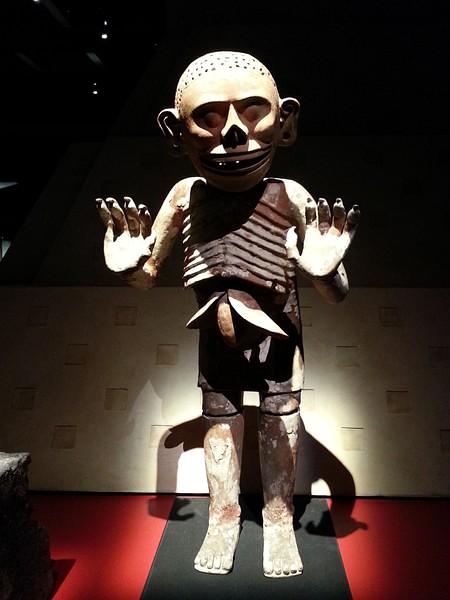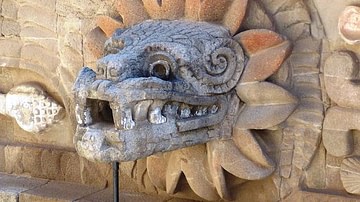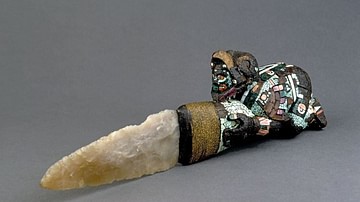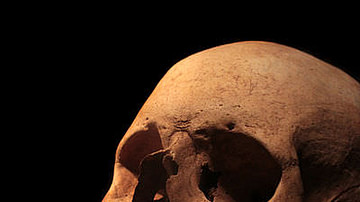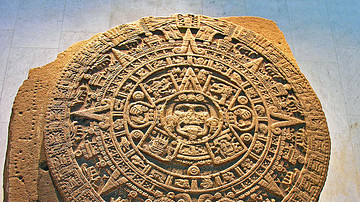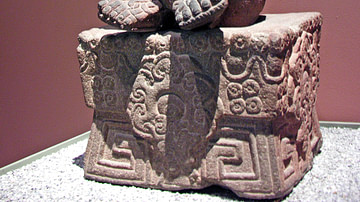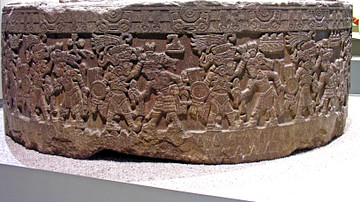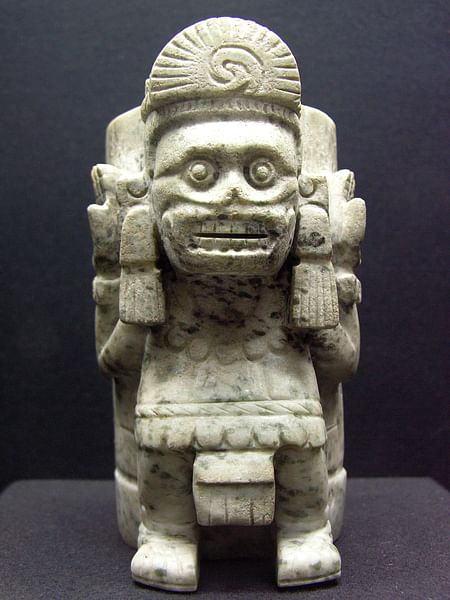
Mictlantecuhtli (pron. Mict-lan-te-cuht-li) or 'Lord of the Land of the Dead' was the Aztec god of death. He ruled the underworld (Mictlán) with his wife Mictecacíhuatl. Mictlantecuhtli was worshipped and feared across Mesoamerica. The god was closely associated with owls, spiders, bats, and the direction south.
Mictlantecuhtli was the ruler of the 10th day Itzcuintli (Dog), the 5th Lord of the Night, and the 6th (or 11th) Lord of the Day. He was the equivalent of the Maya god Yum Cimil, the Zapotec god Kedo, and the Tarascan god Tihuime.
The Creation Myth
In the Aztec creation myth, Mictlantecuhtli attempted to delay the god Ehecatl-Quetzalcóatl on his journey into Mictlán. Quetzalcoatl was searching for the bones of the creatures from the previous world of the 4th Sun in order to make mankind. Amongst the tricks and difficult tasks Mictlantecuhtli set was to insist that Quetzalcoatl could only take the bones away with him if he went around the underworld four times blowing a conch-shell trumpet. This task was not quite as simple as it seemed as the god of the underworld only gave Quetzalcoatl an ordinary conch-shell and so it would not sound. Quetzalcoatl got around the problem by having worms drill holes in the shell and placing bees inside it so that their buzzing would sound like a trumpet. Not to be outdone by this, Mictlantecuhtli let Quetzalcoatl think that he had got the better of things and allowed him to take the bones.
Mictlantecuhtli, then, far from giving up, arranged for his assistants, the Micteca, to dig a large pit so that Quetzalcoatl would stumble into it when he tried to leave Mictlán. Sure enough, when passing the pit and, unluckily startled by a passing quail, Quetzalcoatl fell into the trap and the bones became broken and scattered. However, Quetzalcoatl roused himself and gathering up the bones managed to extract himself from the pit and get away unscathed from the clutches of Mictlantecuhtli. Once safely delivered to the goddess Cihuacóatl, the bones were mixed with Quetzalcoatl's blood and from the mixture sprang forth the first men and women.
Mictlán
Mictlantecuhtli was such an important god in the Aztec pantheon because, as ruler of Mictlán, all souls would one day meet him face to face, for it was believed that only those who suffered a violent death, women who died in childbirth or people killed by storms or floods avoided the underworld in the afterlife. The Aztecs did not believe in a special paradise reserved only for the righteous but, rather, that all people shared the same destiny after death, regardless of the kind of life they had led. Souls would descend the nine layers of the underworld in an arduous four-year journey until eventually reaching extinction in the deepest part - Mictlan Opochcalocan. Mictlantecuhtli was particularly worshipped in the Aztec month of Tititl where, at the temple of Tlalxicco, an impersonator of the god was sacrificed, and incense was burned in his honour.
How is Mictlantecuhtli Represented in Art?
Mictlantecuhtli is usually portrayed in art as a skeleton or covered in bones with red spots representing blood. He may also wear a skull mask, bone ear plugs, a costume of owl feathers, and even a necklace of eyeballs. He has curly black hair and powerful eyes which allow him to penetrate the gloom of the underworld. On occasion, he can be wearing clothes and a conical hat made from bark-paper.
